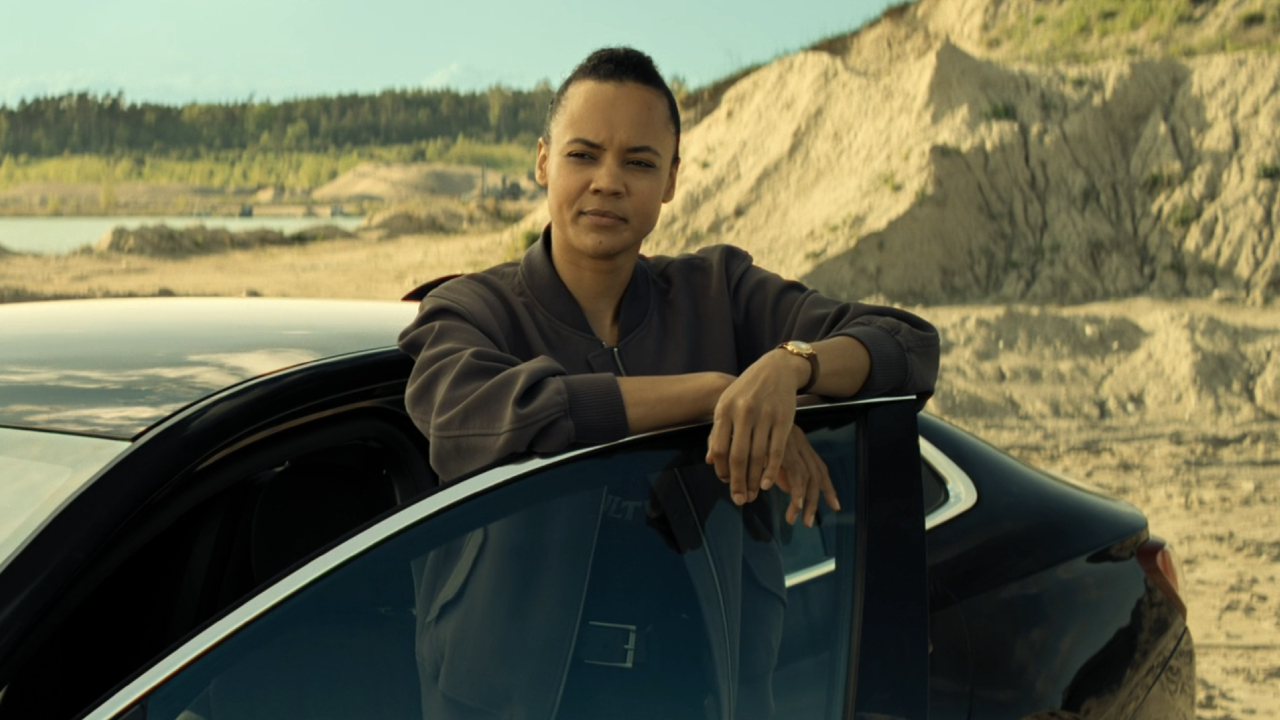To 3D Or Not To 3D: Buy The Right Island of Lemurs: Madagascar Ticket

In the 40-minute documentary Island of Lemurs: Madagascar, narrator Morgan Freeman introduces audiences to several adorable species of lemurs that live in exclusively the wilds of Madagascar. While the film traces their roots, conservationist Dr. Patricia C. Wright educates moviegoers not only on how these lemurs have adapted, but also on how their very existence is threatened by the human population's destruction of their natural habitat.
Our theatrical review will weigh in on whether or not this new release is worth your time, while this column will focus solely on the film's use of 3D. Considering seven separate categories, To 3D Or Not To 3D evaluates the full scope of the 3D viewing experience. Think of it as a consumer's guide for your movie-going, complete with a viewers poll where you can weigh in on how you plan to see Island of Lemurs: Madagascar.
Note: This reviewer screened an IMAX DLP version of the film.
Fit Score
5/5
HD nature docs are as close as most audience members will ever get to the exotic creatures they cover. And the enhancement of 3D can allow for moviegoers to feel a little bit closer to the cuddly lemurs who leap about Madagascar, so the 3D is unquestionably a welcomed enhancement of the experience.
Planning & Effort Score
CINEMABLEND NEWSLETTER
Your Daily Blend of Entertainment News
5/5
Island of Lemurs: Madagascar was produced by Drew Fellman, writer and producer of the 2011 IMAX 3D nature doc Born to Be Wild. Along with his expertise in shooting in the wild with IMAX 3D cameras, Fellman brought together several of his collaborators from that film, including Freeman, composer Mark Mothersbaugh, and most importantly cinematographer David Douglas, who shoots and helms this winsome lemurs doc. The planning for Island of Lemurs: Madagascar's use of 3D was clearly a major part of its planning and production, so full points.
Before the Window Score
2/5
This is that aspect of 3D that seems to reach right out into the theater. I would have been absolutely giddy to see lemurs leaping towards me into this space, or even having their little noses protruding slightly. But regrettably, that never occurs. I didn't notice any noteworthy use of before the window, just the occasional leaf, branch or the head of a human hovering over a cradled lemur.
Beyond the Window Score
5/5
Island of Lemurs: Madagascar fared far better in this category, which accounts for the enhanced depth of field 3D provides that makes a film seem to stretch far beyond the screen it plays on. Scenic views of the Madagascar fields, forests, and surrounding seas are all the more astonishing with the grandeur 3D provides. Douglas sets up some truly breathtaking shots, my favorite of which are lensed from above the treetops looking down. We're essentially given a bird's eye view of lemurs leaping through the trees while the scientists studying them stand far below on the bright yellow dirt paths of the Madagascar wilderness. Moments like these are a perfect marriage of 3D tech and documentary film.
Brightness Score
4/5
Much of Island of Lemurs: Madagascar takes place during the day, where lemurs romp and cuddle in sun-dappled terrains. So the inherent dimming of 3D glasses isn't too much of a problem, except for the occasional night shots, or shots from burrows, where the audience is forced to squint to make out lurking lemurs.
Glasses Off Score
5/5
The easiest way to see how much 3D you're getting is to briefly remove your 3D glasses, observe the blur on the screen, and put them back on. Everything will pop once more, and you can get a feel for the layers of 3D in play. Island of Lemurs: Madagascar aces this test, providing layers of lemurs, and trees, trees, trees, enveloping audience in the gorgeous natural setting.
Audience Health Score
4/5
Bad 3D can be bad for you, causing headaches, eyestrain, or even motion sickness. During Island of Lemurs: Madagascar, I did experience some eyestrain because of jarring focus points. Rather than allowing for all elements of every camera setup to be in focus, Douglas would occasionally put the forest backdrop or the research lab foreground out of focus, so the audience will ideally center in on the lemur in the frame. The trouble with this is my eyes kept trying to readjust to put these elements into focus, which was jarring and unpleasant. But these were brief moments with no long-lasting damage.
3D SCORES RECAP
3D Fit
5
P & E
5
Before The Window
2
Beyond The Window
5
Brightness
4
Glasses Off Test
5
Audience Health
4
Total Score
30/35
Final Verdict: Island of Lemurs: Madagascar is opening only in IMAX and IMAX 3D, so whichever way you choose to go, you're getting a higher priced ticket. While some aspects of the 3D are faulty, I'd still recommend the IMAX 3D version, as is really the most affordable way to get as close to these incredible (and incredibly cute) creatures as possible. Just focus on the lemurs, and avoid the eyestrain.
This poll is no longer available.
Click to visit our full To 3D Or Not To 3D Archive.
Staff writer at CinemaBlend.











